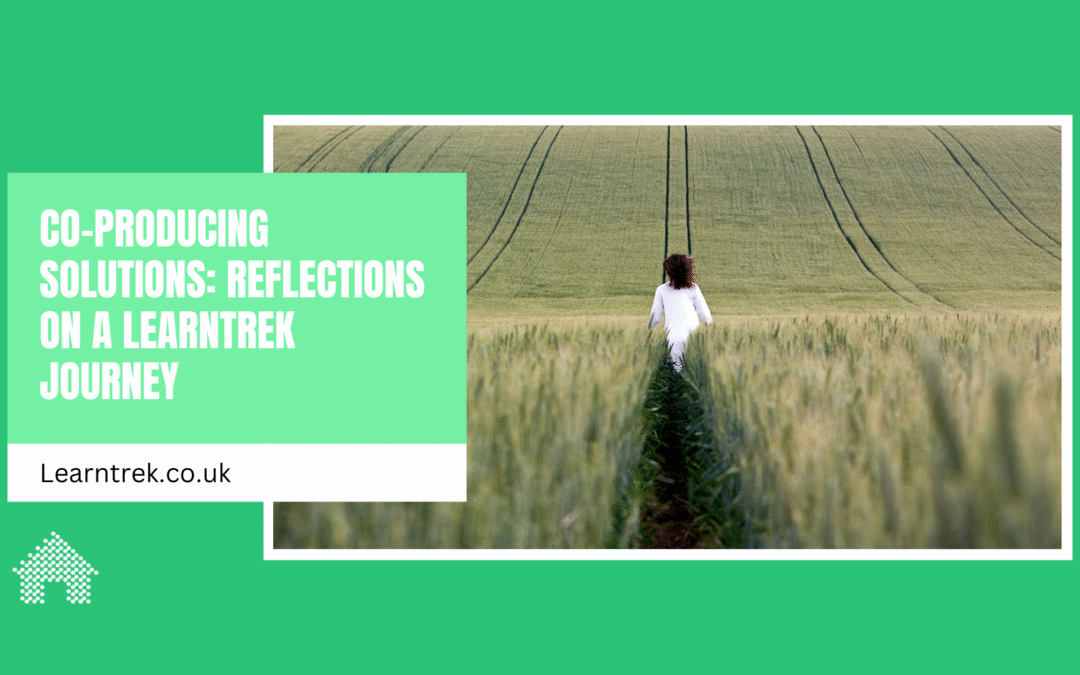
Co-producing solutions: Reflections on a LearnTrek journey

My journey towards LearnTrek began in 2017. I was Senior Executive Officer at a small education charity which had at its heart an independent special school for children with social, emotional and mental health needs.
One of my responsibilities was as DSL for the school and I was experiencing some anxiety about whether my systems for reporting and recording were robust enough to manage the volume and level of safeguarding concerns which arose for us multiple times daily. I was using a spreadsheet which was cross-referenced with paper files and I knew that this was neither fully efficient nor fully safe.
The Birth of an Idea
I was chatting about this one day with my friend, who is a web developer. In the way
I’ve discovered web developers tend to, he became interested in my problem and in
finding a solution to it. As we spoke we discovered quickly that we were attempting to
communicate between two very different world views.
I needed to understand and embrace the endless possibilities of a web-based solution. He needed to decipher my passionate advocacy of children who had not thrived in other settings; he needed to convert what must have seemed to him to be heartfelt incoherence into the building blocks of a system which would be effective in day-to-day work with vulnerable and marginalised children.
Neither of us realised at the time the journey this would take us on, nor that it would eventually include so many partners in education, support and care organisations across the UK.
The Journey of Co-Creation
The process we embarked upon that day very soon included my colleagues in SLT at
the school. Our students faced complex barriers to full inclusion and what were basic
requirements for mainstream students represented a triumph for the children we worked
with. What we needed was a way of recording and measuring our students’ progress over
time in a way which was meaningful given their needs and individual starting points.
The collaboration between value-driven professionals in SEND and a programmer at the top of
his game wasn’t always an easy one; there were frustrations and misunderstandings on both
sides; these were overcome only by commitment to the importance of the project and the
strength of relationships between us – humour and empathy were key!
From Safeguarding to Comprehensive Data
The safeguarding area of the portal (now known as LearnTrek) continues to be a powerful
tool in recording, analysing, reporting and actioning safeguarding concerns. Collaboration
with school colleagues also saw the establishment of attendance, behaviour and curriculum
elements; all of which allow settings to record and report on even the tiniest increments of
progress.
In the years since these small beginnings, our developer and his team have worked with
many providers developing the software incrementally. Each partner provider brings new
insight to the work and new puzzles to solve; always driven by the desire to produce great
outcomes alongside children/service users.
A Shared Vision for Inclusion
Recently, I have accepted a role with the organisation my developer friend co-founded to provide the software to other settings. As I settle in I find myself reflecting on the genesis and evolution of the software; I realise that there are parallels between the origin story of the LearnTrek portal and the creative approaches of the providers who use it.
The field of Alternative Provision is packed with practitioners who trust in the power of coming alongside children in authentic and enduring relationships of mutual recognition and respect; of the importance of creativity in finding solutions and in the belief that with the right support children can become agents in fulfilling their own potential. I look forward to being more closely involved in the process.




